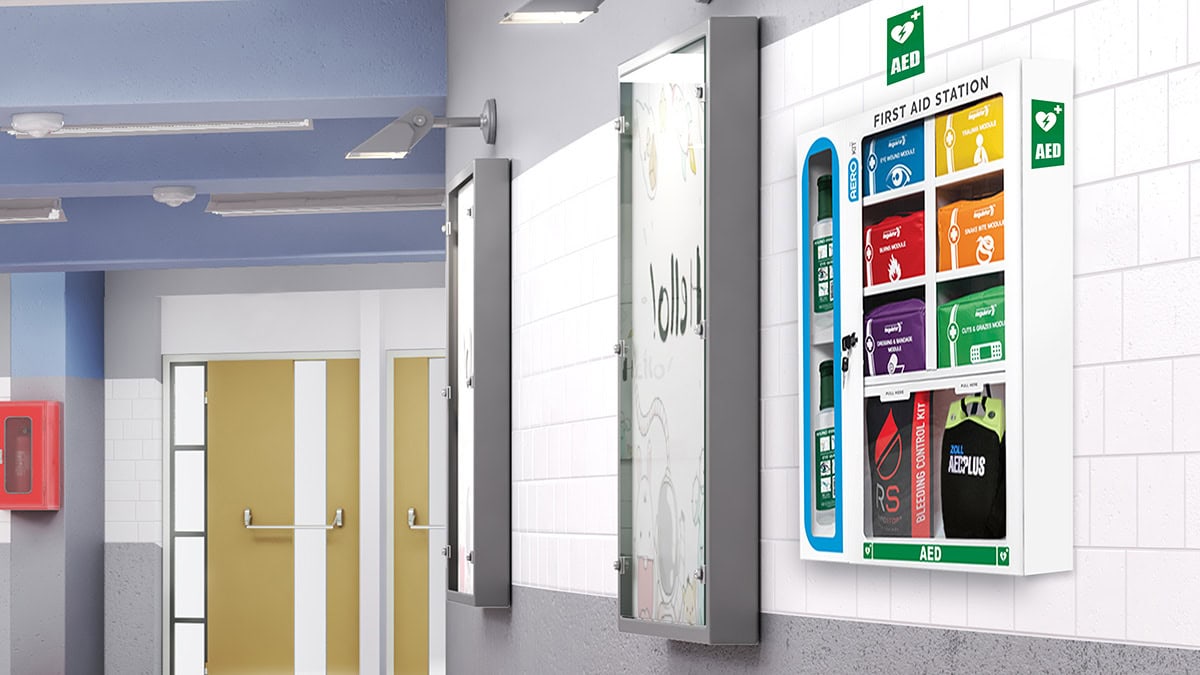Maintaining Defibrillators in Schools: A How-To Guide

30
Sep
Keeping your school’s AED (Automated External Defibrillator) ready can save lives.
Use this step-by-step guide to set a simple maintenance routine for principals, facility managers and safety officers.
Who should use this guide
School principals, business managers, facility managers, first aid officers and sports coordinators.
Before you start
- Confirm where each AED is located and that it’s accessible to staff and students.
- Nominate two responsible staff members for AED checks and record-keeping.
- Fill out your details below to download the checklist.
Defibrillator Maintenance Checklist for Schools
"*" indicates required fields
Step 1: Weekly visual check (1-2 minutes)
- Confirm the AED is in its designated location and unobstructed.
- Check the status indicator shows “ready” (green light/tick on most models).
- Inspect cabinet and signage for damage and visibility.
- Log the check (date/initials).
Tip: If you need a compliant outdoor wall cabinet, see this AED wall cabinet.
Step 2: Monthly battery check (3-5 minutes)
- Check the AED battery status and note remaining life.
- Record the battery install date and expected replacement date in your log.
- Keep a spare on site if recommended by the manufacturer.
Find replacements: AED batteries
Step 3: Monthly electrode pads check (3-5 minutes)
- Confirm adult pads are sealed and in date.
- Confirm child/paediatric pads are available if required for your model.
- Record both pad expiry dates in your school calendar with reminders 60–90 days before expiry.
Find replacements: AED pads.
Step 4: Cabinet and accessories (monthly)
- Test cabinet alarm/light if fitted.
- Confirm scissors, razor, gloves and CPR face shield are present.
- Check cabinet lock or break-seal is operational.
Upgrade/replace: AED wall cabinet
Step 5: Annual service and software
- Book an annual inspection/service with an authorised provider.
- Check for any manufacturer software updates or recall notices.
- Update your school AED register and training records.
Need help? Contact First Aid Accident & Emergency
Step 6: Training and records (ongoing)
- Schedule AED awareness refreshers for staff each term (5–10 minutes in staff meetings).
- Induct new staff on AED locations and basic use.
- Maintain a simple logbook or digital sheet for all checks, parts and services.
Explore training: First Aid & CPR courses
What to do after an AED is used
- Remove the device from service and mark as “Not Ready”.
- Replace used pads and any opened accessories; check battery status.
- Wipe down the AED (follow manufacturer instructions).
- Log the incident and book a post-use inspection if recommended.
- Find replacement parts: pads and batteries
Download the checklist
Defibrillator Maintenance Checklist for Schools (fillable PDF)
Need advice or service?
For servicing, replacement parts or to request a school defibrillator quote, contact First Aid Accident & Emergency.
 Construction Defibrillator Bundles
Construction Defibrillator Bundles